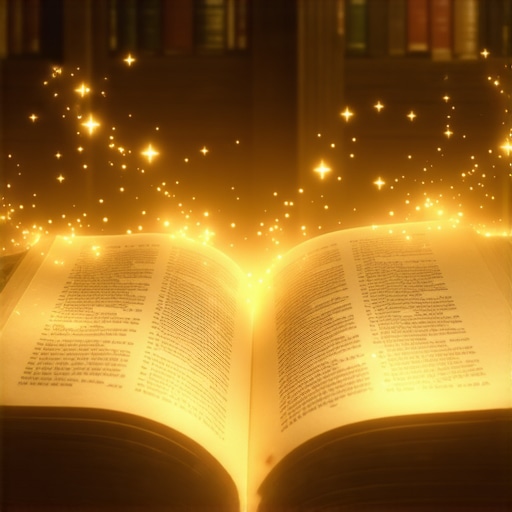My First Encounter with Dream Symbols and the Quest for Meaning
It all started one quiet night when I experienced a vivid dream that left me pondering its significance for days. Like many, I’ve always been fascinated by the mysterious language of dreams, especially within the Islamic tradition. My journey into understanding Muntakhab al Kalam fi Tafsir el Ahlam began with a simple question: what do these sacred dreams truly mean? Over time, I discovered that interpreting dreams isn’t just about symbols but also about connecting with divine messages and spiritual insights.
How Sacred Dreams Reveal Hidden Messages in Islam
Islamic dream interpretation is a rich field, filled with profound symbolism and divine guidance. I found that dreams about prophets, sacred symbols, or even animals like snakes can carry deep spiritual messages. For example, reading about the symbolism of snakes in Islamic dreams on this resource helped me understand that snakes often symbolize warnings or hidden enemies, but also potential for spiritual growth if interpreted correctly.
What Is the Significance of Dreaming About Prophets and Sacred Symbols?
Dreams involving prophets such as Prophet Musa or Prophet Yusuf are particularly sacred. I have personally encountered dreams where I saw Prophet Musa, which I now understand as divine messages urging patience and faith, reminiscent of the interpretations found in this article. These dreams are often considered a form of divine communication, offering guidance and reassurance in times of doubt.
Why Do Dreams Hold Such Sacred Significance in Islam?
Dreams have always been a bridge between the earthly and divine realms in Islamic tradition. I’ve learned that understanding them requires both spiritual insight and a sincere heart. According to scholars like Ibn al-Qayyim, dreams are a form of divine inspiration that can serve as warnings, glad tidings, or lessons. Reflecting on this, I realize that dreams serve as a sacred language that, when interpreted properly, can deepen our faith and understanding of divine will.
If you’re curious about how your dreams might carry divine messages, I encourage you to explore these interpretations further and share your experiences. Connecting with others on this spiritual journey enriches our understanding and faith.
For more insights, you might find it helpful to consult authoritative sources like this comprehensive guide, which offers detailed explanations of various dream symbols in Islam.
The Role of Dreams in Islamic Spirituality: A Deep Dive
Dreams are often regarded as divine messages that offer guidance, warnings, or glad tidings. In Islamic tradition, understanding these sacred visions requires a nuanced grasp of symbolism and spiritual context. Scholars such as Ibn al-Qayyim emphasize that dreams can serve as a reflection of one’s inner state and a channel for divine communication. Recognizing the difference between true dreams (ru’yaa) and shaytani illusions is essential for accurate interpretation, as highlighted in this authoritative guide.
How Do Sacred Symbols in Dreams Illuminate Our Path?
Symbols like water, fire, animals, or specific colors are rich with spiritual significance. For example, dreaming of water often symbolizes purification and divine guidance, especially when associated with clear, flowing streams as discussed in this resource. Conversely, animals like snakes can carry dual meanings—warnings of hidden enemies or opportunities for spiritual growth, depending on the context and behavior in the dream. Recognizing these symbols within the framework of Islamic dream interpretation enhances our ability to discern divine messages from superficial illusions.
Can Dreams About Prophets and Sacred Figures Be Misinterpreted?
Dreams involving prophets such as Prophet Musa or Prophet Yusuf are considered highly sacred. They often carry divine messages tailored to the dreamer’s spiritual journey. An experienced interpreter recognizes the importance of context, emotional state, and personal circumstances. For instance, a dream of Prophet Musa urging patience aligns with Quranic teachings and can serve as divine reassurance, as explored in this detailed article. It’s crucial to approach such dreams with humility and seek guidance from knowledgeable scholars to avoid misinterpretation.
What Are the Practical Steps to Safeguard Against Misinterpreting Sacred Dreams?
To ensure accurate understanding, Muslims are encouraged to follow specific practices: seek refuge from shaytani whispers, pray for divine guidance, and consult trusted Islamic scholars. Remember, dreams are a form of divine inspiration but not infallible. Consulting authentic sources and maintaining sincerity in prayer help clarify the true message behind a dream. For instance, consulting comprehensive resources like this guide can deepen your understanding of complex symbols.
If you’re interested in exploring more about the spiritual significance of dreams, I invite you to share your experiences or ask questions in the comments. Connecting with a community of learners enriches our collective understanding of divine messages.
Let’s continue to uncover the sacred language of dreams together, as they are a profound aspect of our faith journey in Islam.
My Personal Reflection on Sacred Dreams and Their Hidden Layers
Throughout my spiritual journey, I’ve come to realize that dreams are not merely subconscious images but profound messages from the divine. Each dream, especially those involving sacred symbols or prophets, invites us to delve deeper into our faith and understand divine intentions more clearly. I remember one vivid dream where I saw the Prophet Yusuf, which left me overwhelmed with a sense of divine reassurance and guidance. Such moments compel us to seek authentic interpretations and reflect on their spiritual messages.
The Complexity of Dream Symbols: Beyond The Surface
Dream symbols like snakes, water, or animals carry layered meanings, often requiring careful contemplation and contextual understanding. For instance, snakes can symbolize warnings, spiritual enemies, or even opportunities for growth, depending on the dream’s context and behavior of the snake. Exploring this resource deepened my appreciation for the nuanced symbolism embedded in Islamic dreams. Recognizing these symbols within the framework of Islamic dream interpretation enhances our ability to discern divine guidance amidst superficial appearances.
How Do Sacred Figures in Dreams Guide Our Spiritual Path?
Dreams involving Prophets like Musa or Yusuf are considered a direct channel of divine communication. I experienced a dream where Prophet Musa appeared, urging patience and steadfastness, aligning with Quranic teachings. These dreams are often tailored to our spiritual needs, offering reassurance and guidance. According to this authoritative source, such visions are sacred and require sincere reflection and respectful interpretation. They serve as divine messages meant to strengthen our faith and clarify our spiritual journey.
What Are the Nuances in Interpreting Divine Dreams to Avoid Misunderstandings?
Interpreting sacred dreams involves humility, patience, and often consultation with knowledgeable scholars. It’s vital to differentiate between true divine messages (ru’yaa) and Shaytani illusions, which can mislead us or cause confusion. As Ibn al-Qayyim emphasizes, sincere supplication, prayer, and reliance on authentic sources help ensure accurate understanding. Engaging with comprehensive guides like this detailed resource provides valuable insights into complex symbols and their spiritual significance.
If you’ve had an experience with sacred dreams or seek further clarity, I encourage you to share your insights or questions in the comments. Our collective reflections deepen our understanding and strengthen our faith.
The Role of Symbols in Illuminating Our Divine Path
Symbols such as water, fire, or specific animals act as spiritual signposts that guide us through life’s challenges. For example, dreaming of flowing water often signifies divine purification and guidance, resonating with this insightful article. Recognizing these symbols within their spiritual context enables us to interpret divine messages more accurately, fostering inner growth and faith.
Addressing the Risk of Misinterpretation in Sacred Dreams
Given the profound nature of dreams involving prophets and sacred figures, misinterpretation can pose spiritual risks. I’ve learned that approaching such dreams with humility, sincere prayer, and consultation with trusted scholars is essential. Remember, dreams serve as divine signs, but their true meaning often depends on individual circumstances, emotional states, and spiritual readiness. For deeper understanding, exploring resources like this comprehensive guide can be invaluable.
Share your experiences or questions about your sacred dreams—I believe that through community and shared insight, we can uncover even deeper spiritual truths. Let us continue our journey of divine discovery, trusting that each dream holds a sacred message waiting to be unveiled.
Unveiling the Layers of Sacred Dream Symbols in Islamic Mysticism
As I delved deeper into the realm of Islamic dream interpretation, I discovered that beyond the surface lies an intricate tapestry of symbolism rooted in divine wisdom. Sacred symbols such as water, fire, or celestial bodies serve as spiritual signposts, guiding us through complex life challenges and inner transformations. For instance, dreaming of a luminous moon can signify divine guidance and spiritual enlightenment, resonating with insights from this profound resource. Recognizing these nuanced symbols requires both scholarly knowledge and intuitive sensitivity, fostering a profound connection with divine messages.
Advanced Strategies for Accurate Dream Interpretation in Islamic Contexts
My journey has shown me that interpreting dreams accurately demands a multi-layered approach. It’s essential to differentiate between authentic divine visions (ru’yaa) and Shaytani illusions, which can distort divine messages. To do this, I rely on principles outlined by scholars like Ibn al-Qayyim, emphasizing sincere supplication, prayer, and consulting trusted Islamic scholars. Engaging with authoritative guides such as this comprehensive resource helps decode complex symbols with contextual precision. Such practices safeguard the spiritual integrity of the interpretation process, ensuring that divine messages are received with humility and clarity.
How Can Modern Technology Enhance Our Understanding of Sacred Dreams?
In an era dominated by technological advancements, I have found that AI-powered dream interpretive tools offer promising avenues for understanding sacred visions. These tools, when used judiciously alongside traditional scholarship, can analyze recurring symbols, numerical patterns, and contextual cues to provide nuanced insights. For example, exploring the significance of dream numbers in Islamic tradition through resources like this detailed guide reveals layers of divine coding. Integrating such technological aids with personal spiritual discernment can elevate our interpretative capabilities, fostering a more profound grasp of divine messages.
If you are eager to deepen your understanding of sacred dreams and their divine messages, I encourage you to share your experiences or questions. Through community dialogue and scholarly exploration, we can unlock even more intricate layers of divine wisdom embedded within our dreams.
The Interplay of Inner Purity and Dream Clarity in Islamic Spirituality
My personal reflections affirm that the purity of one’s inner state significantly influences the clarity and authenticity of dreams. Inner purification—achieved through sincere worship, self-awareness, and spiritual discipline—creates a fertile ground for receiving divine messages clearly. As I observed in my own life, periods of spiritual refinement often coincide with more vivid, meaningful dreams involving prophets or sacred symbols. This aligns with the teachings of scholars like Ibn al-Qayyim, who emphasize that spiritual purification enhances our receptivity to divine guidance through dreams. Maintaining a conscious effort towards Nafsani (self-purification) can thus serve as a catalyst for more profound spiritual insights and divine communication.
Practical Measures to Safeguard Against Misinterpretation of Sacred Dreams
Given the sacred nature of dreams involving prophets and divine symbols, I’ve learned that meticulous caution is paramount. Practices such as seeking refuge from Shaytani whispers, praying for divine guidance, and consulting reputable scholars are essential steps. Additionally, I always cross-reference dream symbols with established Islamic dream dictionaries and scholarly publications. For instance, understanding the symbolism behind dreams of Prophet Musa or Prophet Yusuf requires contextual awareness and humility to avoid misjudgments. These precautions ensure that we approach divine messages with reverence, minimizing risks of misinterpretation and spiritual misguidance.
If you have encountered sacred dreams that left you pondering their significance, I invite you to share your insights. Engaging in reflective dialogue and seeking scholarly counsel can illuminate hidden layers of divine wisdom and foster spiritual growth in our collective journey.
Things I Wish I Knew Earlier About Dream Interpretation in Islam
1. The Power of Context
Looking back, I realize that understanding dream symbols without considering the personal and spiritual context can lead to misinterpretation. Dreams about water, for instance, often symbolize purification, but their true meaning depends on whether the water was calm or turbulent in the dream, and my own state of faith at the time.
2. Sacred Dreams Are Often Personal
As I delved deeper, I saw that dreams involving prophets or sacred symbols are highly personal. A dream of Prophet Musa might carry a different message for me than for someone else, emphasizing the importance of sincere reflection and prayer when seeking understanding.
3. Not All Dreams Are Divine Messages
I used to think every vivid dream was a direct communication. Now I know that distinguishing between true visions (ru’yaa) and Shaytani illusions is crucial, and consulting trusted scholars can help clarify.
4. The Role of Inner Purity
My journey taught me that inner spiritual purification enhances dream clarity. Regular worship and self-awareness create a receptive heart for divine messages, making sacred dreams more meaningful.
5. Symbols Are Nuanced
Symbols like snakes or animals carry layered meanings. Exploring resources like this guide helped me understand their dual nature—warnings or opportunities for growth—depending on the context.
6. Dreams Can Be a Source of Reassurance
Dreams involving prophets often serve as divine reassurance. I recall a dream of Prophet Yusuf that strengthened my faith during difficult times, reminding me of the divine guidance available to us all.
Resources I’ve Come to Trust Over Time
- Islamic Dream Dictionary: This comprehensive resource helped me decode complex symbols and understand their spiritual significance. It’s a great starting point for anyone interested in dream interpretation.
- Scholarly Works by Ibn al-Qayyim: His writings deepen the understanding that dreams are divine messages, emphasizing sincerity and humility in interpretation.
- Online Islamic Dream Resources: Websites like this one offer detailed explanations and scholarly insights that have guided my understanding.
Parting Thoughts from My Perspective
Exploring the sacred language of dreams in Islam has been a transformative experience. I’ve learned that dreams are a divine gift, offering guidance and reassurance when approached with sincerity, humility, and spiritual purity. Recognizing the nuanced symbolism and seeking authentic interpretations can deepen our faith and connect us more closely to divine wisdom. If this resonates with you, I’d love to hear your own experiences or thoughts—sharing our journeys enriches us all. Feel free to leave a comment or share this article with someone who might find it helpful. Remember, every sacred dream holds a divine message waiting to be unveiled.


